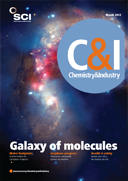The organisers of the London 2012 Olympics are confident they will catch the drug cheats this summer, thanks to the most comprehensive anti-doping laboratory yet. GlaxoSmithKline (GSK) has spent £20m equipping the 4400m2 facility at its site in Harlow, Essex – the first time that a pharmaceutical company has sponsored an Olympic anti-doping lab.
Testing will be carried out by an independent team of more than 150 scientists, led by David Cowan, director of the Drug Control Centre at King’s College London, and accredited by the World Anti-Doping Agency (WADA).
‘These laboratories are the most high-tech labs in the history of the Games, analysing more samples than ever before,’ claims Cowan. ‘We have developed, with GSK support, super-fast and super-sensitive technologies to be able to detect use of prohibited substances.’
The state-of-the-art equipment will work round the clock, processing 400 samples every day, 6250 samples in total. ‘It will process the same number of samples in the six weeks of the Games as Kings’ normally processes in one year,’ says GSK’s Sarah Hornby.
The shortest test turnaround time will be 24 hours. Positives will be returned in 48 hours, with the exception of the endurance-boosting drug erythropoietin (EPO), which will take 72 hours.
Most banned substances fall into five groups. Stimulants such as cocaine make athletes more alert and mask fatigue; peptides and hormones including EPO, a protein hormone produced by the kidney, and Human Growth Hormone (HGH) that builds muscle; anabolic agents such as steroids that help athletes train harder and build muscle; diuretics that remove fluid and can help athletes make the right weight in sports such as boxing, or hide other drug use; and narcotic analgesics such as pethidine or morphine, which mask pain caused by injury or fatigue.
However, cheating athletes are getting sophisticated, tailoring multiple substances to work together or using approaches that are particularly hard to detect, such as blood doping, where they inject blood that has been removed from their body a few days earlier. This increases the number of red blood cells and boosts endurance by allowing them to carry more oxygen to the muscles.
Kings will not confirm if a new way of detecting blood doping – under development by Cowan’s team – will be ready for the summer. The test identifies different RNA strands in a blood sample; RNA is different in blood that has been stored. Kings is also keeping under wraps an improved test to detect HGH. It is thought that this can detect doping even if it occurred weeks – rather than a few days – before testing.
The fate of the facility after the Olympics remains undecided. Andrew Witty, Glaxo’s chief executive, has said it could become a stand-alone business. Options include selling it or handing it over to a consortium.
Some key equipment
Centrifuge
Urine samples naturally contain some sediment, which can complicate testing. The centrifuge removes this sediment, making the sample easier to analyse.
Haematology analyser
This is used to count the different cells in a blood sample; high red cell counts could indicate EPO use. Blood cells are passed one by one through a laser beam and are identified by measuring the type and intensity of the scattered light. Comparison with the athlete’s previous profile reveals any major change in the composition of his/her blood.
Liquid chromatography/mass spectrometry
Liquid chromatography/mass spectrometry (LCMS) can test a sample for many prohibited substances simultaneously. At the Olympics’ facility, LCMS will check for over 240 illegal substances in less than 24 hours. In the LC machine, the sample is separated under high pressure and components pass to the mass spectrometer at different times. The charged substances are injected into a sealed chamber, and forced into orbit around specially shaped electrodes. The speed of their oscillation is used to identify the substance.
New era of cooperation
The pharma and biotech industries have a critical role to play in helping anti-doping agencies stay ahead of the dopers, who have an ever-increasing level of scientific expertise, says World Anti-Doping Agency (WADA) president John Fahey. He describes a ‘new era of cooperation’. For example, GSK signed an agreement with WADA in July 2011 to share information about its medicines, including products under development, giving WADA time to prepare tests for drugs that could be misused before the drugs become available on prescription. ‘It is designed to anticipate doping trends and identify pipeline medical compounds with doping potential,’ explains Fahey. ‘WADA now gets a heads-up on medicines that might be abused.’





